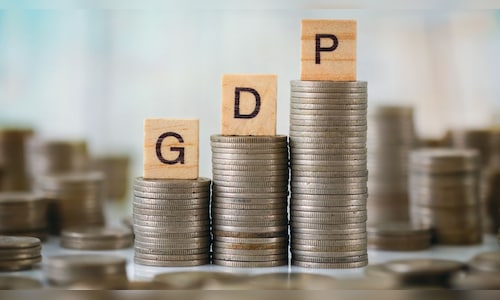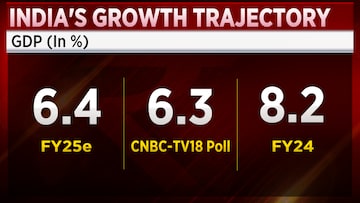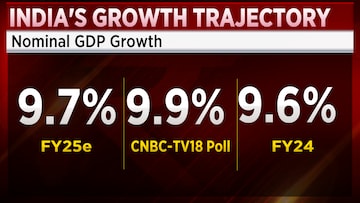
| Company | Value | Change | %Change |
|---|
Madan Sabnavis, Chief Economist at Bank of Baroda, expects an upward revision of the 6.4% growth projection. He explained that these figures are likely conservative, a standard approach when preparing for budget formulation.
“The use of this number is that they will be used in the budget formulation, which always have to be conservative, so that you are closer to target, rather than overestimating your revenues. I think that’s why these numbers are kept conservative. I think that these numbers are fairly okay, and we will see an upside when we have to find numbers,” Sabnavis added.

Read Here | India’s economy to grow at slowest pace in 4 years; manufacturing faces sharpest decline
In contrast, Pronab Sen, former Chief Statistician, expressed that if the estimate is revised, it is likely to be adjusted downwards, as he does not expect the fourth quarter to show significant improvement.
Sen added, “For the budget purposes, the nominal GDP is important, and I think the government can get by with actually assuming something like an 11% growth for next year. A 6.4% plus 4.50% inflation is perfectly reasonable as well within their inflation targeting, and seems consistent with our longer term growth trajectory.”
Abhishek Upadhyay, Senior Economist at ICICI Securities, stated that the estimate appears realistic, noting they had anticipated a 6.5% growth for the full year.
 He stated that the numbers are credible, with a 6.7% growth projected for the second half of the year, which aligns well with trade growth and expectations for the next fiscal year. While these are still estimates, he suggested that the momentum heading into the next fiscal year remains reasonable.
He stated that the numbers are credible, with a 6.7% growth projected for the second half of the year, which aligns well with trade growth and expectations for the next fiscal year. While these are still estimates, he suggested that the momentum heading into the next fiscal year remains reasonable.
Upadhyay expects growth to be around 6.5% to 7% for the next year, with a more precise estimate of 6.7% to 6.8%. This projection is based on anticipated credit growth and the expectation that the Reserve Bank of India will ease its policies, providing a boost.
Additionally, the pace at which the fiscal deficit is falling is expected to slow, which will also offer incremental support to the economy.
The first advance estimate for FY25 suggests that, apart from agriculture and public administration, all sectors are estimated to show lower growth compared to FY24. Manufacturing is expected to experience the sharpest decline among all sectors.
The top three contributors to GDP—manufacturing, trade & hotels, and financial services & real estate—are also estimated to show slower growth in FY25.
Follow our live blog for more updates on India’s GDP data for 2025.



